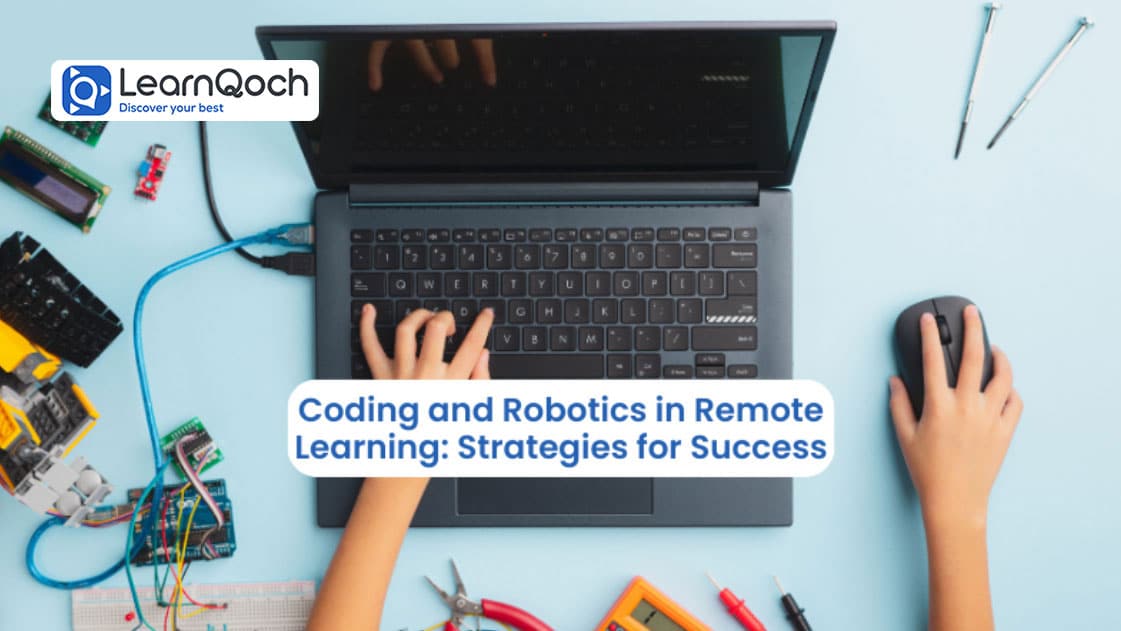Coding and Robotics in Remote Learning: Strategies for Success
The realm of education has undergone a profound evolution with the integration of technology into learning processes. Coding and robotics have emerged as pivotal components in fostering critical thinking, problem-solving, and creativity among students. In the wake of remote or hybrid learning environments, the integration of these disciplines presents both challenges and opportunities. Let’s delve into insights and strategies to effectively incorporate coding and robotics into remote or hybrid learning settings, fostering an engaging and fruitful educational experience.
Understanding the Significance
- Enhancing Critical Skills: Coding and robotics empower students with skills crucial for the future workforce, including logical reasoning, computational thinking, and adaptability.
- Promoting Collaboration: These subjects encourage collaborative learning, fostering teamwork and communication among students, even in remote setups.
Strategies for Remote Learning Success
1. Accessible Platforms and Tools
- User-Friendly Platforms: Choose platforms that are accessible across devices, user-friendly, and offer a range of activities suitable for different skill levels.
- Diverse Toolkits: Introduce a variety of tools and software suitable for coding and robotics, accommodating diverse learning styles and preferences.
2. Interactive Learning Modules
- Engaging Content: Curate interactive modules that captivate students’ attention and encourage hands-on learning.
- Real-life Applications: Connect coding and robotics concepts to real-world scenarios, sparking interest and relevance in learning.
3. Adaptability and Flexibility
- Personalized Learning: Tailor learning paths to accommodate students’ pace and preferences, allowing them to explore at their comfort levels.
- Adapt to Challenges: Provide troubleshooting resources and encourage resilience when faced with coding or robotics challenges.
4. Peer Collaboration and Support
- Virtual Collaboration Tools: Leverage collaborative platforms and tools to facilitate peer interaction, encouraging teamwork and problem-solving.
- Peer Mentorship: Encourage students to support each other, fostering a community of learners where they can seek help and guidance from peers.
5. Teacher Support and Professional Development
- Ongoing Training: Equip educators with continuous training and resources to confidently navigate teaching coding and robotics remotely.
- Support Networks: Facilitate teacher communities or forums where educators can exchange best practices and troubleshoot challenges together.
6. Integration with Curriculum
- Interdisciplinary Approach: Seamlessly integrate coding and robotics into various subjects, demonstrating their applications across disciplines like math, science, and even humanities.
- Project-Based Learning: Encourage project-based assignments that involve coding and robotics, fostering practical application and deeper understanding.
7. Assessments and Feedback
- Varied Assessment Methods: Employ diverse assessment techniques beyond traditional exams, such as project evaluations or peer reviews, to gauge students’ understanding effectively.
- Constructive Feedback: Provide timely and constructive feedback to encourage continuous improvement and refinement of coding and robotics skills.
Overcoming Challenges
1. Access and Resources
- Equity Concerns: Address the digital divide by providing access to necessary devices and internet connectivity for all students.
- Resource Allocation: Ensure sufficient resources and materials are available for hands-on activities, even in remote settings.
2. Engagement and Motivation
- Interactive Sessions: Plan engaging activities, live demonstrations, and interactive sessions to keep students motivated and focused during virtual classes.
- Gamification: Incorporate elements of gamification to make learning coding and robotics enjoyable and rewarding.
3. Technical Support
- Technical Assistance: Offer readily available technical support to address software or hardware issues, minimizing disruptions to the learning process.
- Preparation and Testing: Preemptively test tools and platforms before sessions to prevent technical hiccups.
Conclusion
Incorporating coding and robotics into remote or hybrid learning environments demands a blend of innovative teaching methodologies, adaptability, and a supportive ecosystem. By leveraging accessible tools, fostering collaboration, providing teacher support, and addressing challenges proactively, educators can create a stimulating environment where students thrive in their exploration of these transformative disciplines. The integration of coding and robotics is not merely about learning technical skills but nurturing problem-solving abilities, creativity, and resilience—attributes indispensable for the future generation’s success in an increasingly tech-driven world.
LearnQoch is an online code-leading platform for kids that blends coding with STEM-related activities. The unique and engaging curriculum extends beyond STEM education. Through this, LearnQoch enables kids to engage creatively, critically, and confidently in their learning.
For more details
Call us at +91 84519 01079 or write to info@learnqoch.com

